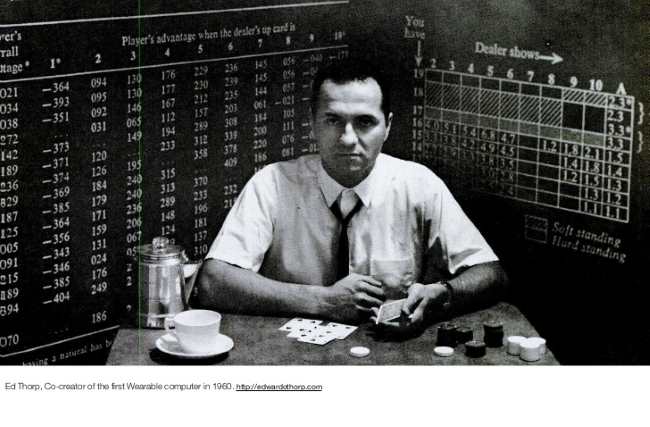Claude Shannon Beating Roulette
Famous roulette code crackers from the sixties.
Claude Shannon and Ed Thorpe Took Many Casinos to the Cleaners Playing Roulette in the 1960s.
There have been some great minds that have devoted their time and brainpower to beating the roulette wheel, and one of the most famous is that of Claude Shannon in the sixties.
Claude Shannon
Claude Elwood Shannon (1916 – 2001) was a US mathematician, electrical engineer, and cryptographer who later became known as the Father of Information Theory without whom we would never have seen close up pictures of Jupiter, surfed the Internet or played Clash of Clans on our mobile phones. He was a titan in the world of mathematics.
Claude Shannon and Ed Thorp claimed to be the first men to crack the roulette code using a predictive algorithm in 1960, Ed Thorp being the serial casino pest who invented card counting in Blackjack. That’s in dispute, as these two were inspired by the exploits of Hibbs and Walford in the 1940s, but you make your own mind up!
No More Bets Please
The key to their method was the fact that you can still bet after the croupier has spun the wheel, until he or she says “No More Bets Please”. Thorp and Shannon carried out a series of experiments on their own wheel. They successfully predicted zones into which the ball would come to a rest, with enough accuracy to give them an edge over the casino.
They did this by measuring the speed of the wheel’s rotation (assuming it to be constant- a pretty accurate assumption given that roulette was invented as a by-product of someone trying to build one of Pascal’s Perpetual Motion Machine), the speed of the ball and its rate of decay.
Mapping the Path of the Ball
So, they were mapping out the ball’s spiral path around the track, and plotting it against the rotation of the wheel.
Of course, there are plenty of chaotic events going on too, with the ball jumping off the diamonds on the wheel, but they found that they could at least minimise any chaotic effects on their algorithm- enough to give them a statistical edge that they could profit from when using a systematic betting strategy.
In fact, Ed Thorp has kindly shared some of the articles he wrote for the Gambling Times on his website.
Ed Thorp’s Gambling Times Articles:
Sensors on the Wheel
Unfortunately, the method involved a lot of kit – much of which was impossible to take into real life casinos.
The speed was measured with micro-switches built into a shoe, and the curve modelling was done with analog computing (this was the 60s remember) with radio transmitters transmitting the wheel information to a computer elsewhere (you couldn’t miniaturise this kind of computing power into a shoe in those days).
You needed a player with good hand eye coordination to measure the ball passing through certain locations to determine its speed. You needed to nail the location of the ball to within one ball’s width and transmit the information.
This was a two man job (one measuring, the other betting).
Patience Needed
Thorp and Shannon and their wives discovered that the system required time and patience and training over time to make sure that the speed measurer in particular was on top of his or her game.
Ultimately, they became bored and moved onto other projects, but there is no doubt that these two men laid the groundwork for subsequent Roulette Clockers who have successfully cracked the roulette code with predictive algorithms.
And, of course, the technology, computing power and possibilities of hiding the technology have all improved exponentially since the 1960s. That’s Moore’s Law for you.
How it Fared in Las Vegas
Shannon and Thorpe’s exploits in Las Vegas have now become one of the legends of roulette.
Imagine carving up a roulette wheel into eight zones. By 1961, Thorp and Shannon reckoned they had a system that could accurately predict which of those zones would end up with the roulette ball. Shannon made sure Thorp was sworn to absolute secrecy.
Ed Thorp
Do you Have a Light?
The roulette busting computer was the size of a pack of cigarettes, and manipulated by Thorp’s and Shannon’s big toes with micro-switches in their shoes.
One switch booted up the computer and the other timed the wheel and the ball. Once the wheel speed was measured, the computer sent a musical scale whose eight tones mapped the 8 quadrants passing a reference point. Both men heard the music via a small earphone in one ear.
You can see how this was a precarious situation to put yourself in, given that the men were trying to rip off casinos in the sixties that were probably run by the Mob!
The rest, as they say, is history. Luckily for Planet Earth, the men returned to devoting their time to more high-brow pursuits. And you could probably argue, that thanks to Shannon’s ground-breaking work on information theory, these 2 men opened up whole new box of tricks for roulette clockers to use against the casinos.


